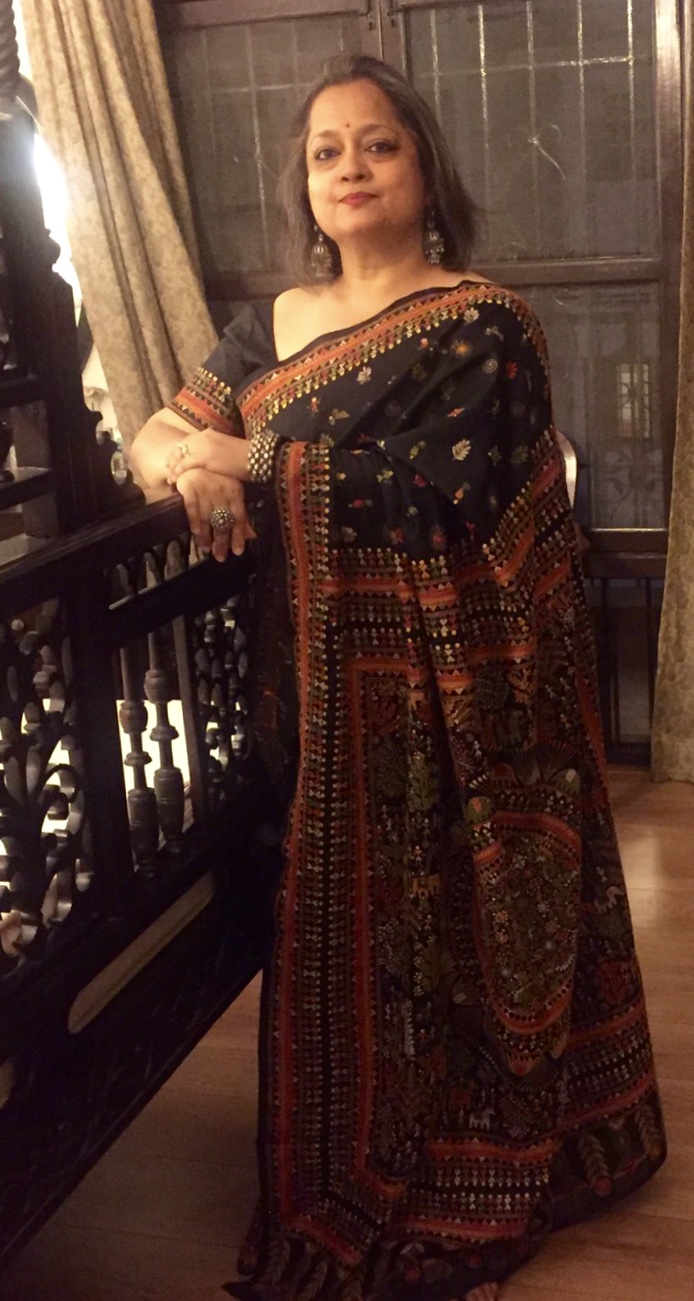Kantha Warli Tales
Saree#9
When two indigenous crafts meet on a single canvas of soft silk, the result has got to be sheer drama! No story here, just a humble submission to India’s unparalleled cultural legacy. This is one of my favourite saris combining the art of Kantha embroidery from Bengal in eastern India, and Warli wall paintings of the Adivasis from the Sahyadri range in western India.
Espied and acquired in Calcutta, it was love at first sight. How could I possibly not possess this beauty? As an Indian, I am often dumbfounded at the vast repertoire of arts, crafts and textiles that our country can boast of. I feel proud and humbled all at once. Pride for luckily being a part of this centuries old heritage, and humility for admitting guilt at sometimes taking it for granted.
Imagine the love, dedication and artistry of a village woman, a doting grandmother or a young mother, stacking together layers of old, used, softened saris or dhotis. Then using a running stitch in different motifs to decorate the surface. Women in Bengal use this technique to make light blankets, throws or bedspreads, especially for children. The subject could be anything from beautiful folk and floral motifs, animal and bird figures and geometrical shapes. Themes from day-to-day rural activities are also a common subject. That is how a piece of kantha embroidery takes shape.
Warli paintings are rudimentary wall paintings using a very basic graphic vocabulary: a circle, a triangle and a square. Scenes portraying hunting, fishing and farming, festivals and dances, trees and animals comprise the central motif in these ritual paintings. Human and animal bodies are represented by two triangles joined at the tip; the upper triangle depicts the trunk and the lower triangle, the pelvis. Their precarious equilibrium symbolizes the balance of the universe, and of the couple, and has the practical and amusing advantage of animating the bodies. Apart from ritualistic paintings, Warli paintings cover day-to-day activities of village folk.
It is insightful and delightful to observe that rural artists necessarily delve into their own lives to seek inspiration for aesthetic pursuits. How else do you explain similar subjects being used by indigenous people from two separate parts of the country?
So that’s my kantha-warli saree story. I must confess every time I look at it closely, I find myself running my hand over it and weaving stories from the figures and scenes embroidered on it. Each time it presents me with a new joy!


100 to 100 marks to the saree… fabulous